-
 Bitcoin
Bitcoin $105,564.0464
0.23% -
 Ethereum
Ethereum $2,532.7861
-0.95% -
 Tether USDt
Tether USDt $1.0005
0.00% -
 XRP
XRP $2.1504
-0.10% -
 BNB
BNB $647.9477
-0.64% -
 Solana
Solana $145.7444
-0.88% -
 USDC
USDC $0.9999
0.01% -
 Dogecoin
Dogecoin $0.1778
-0.04% -
 TRON
TRON $0.2718
0.14% -
 Cardano
Cardano $0.6284
-1.25% -
 Hyperliquid
Hyperliquid $40.5452
-3.15% -
 Sui
Sui $2.9851
-1.60% -
 Chainlink
Chainlink $13.2472
-0.45% -
 Bitcoin Cash
Bitcoin Cash $437.5258
-1.68% -
 UNUS SED LEO
UNUS SED LEO $9.1153
0.92% -
 Stellar
Stellar $0.2577
-0.77% -
 Avalanche
Avalanche $18.9603
-1.59% -
 Toncoin
Toncoin $2.9625
-1.72% -
 Shiba Inu
Shiba Inu $0.0...01211
-0.08% -
 Litecoin
Litecoin $85.7512
-0.61% -
 Hedera
Hedera $0.1540
-2.92% -
 Polkadot
Polkadot $3.7877
-0.71% -
 Ethena USDe
Ethena USDe $1.0004
-0.01% -
 Monero
Monero $314.6226
1.31% -
 Dai
Dai $1.0000
0.00% -
 Bitget Token
Bitget Token $4.5216
-0.55% -
 Pepe
Pepe $0.0...01105
-1.09% -
 Uniswap
Uniswap $7.3637
-2.47% -
 Pi
Pi $0.6184
6.26% -
 Aave
Aave $275.1479
-4.78%
Daily limit orders dropped sharply: signal that the main force is going to run away?
A sharp drop in daily limit orders across major crypto exchanges has traders questioning if "whales" are preparing to exit, though the decline may also stem from market maker adjustments, exchange events, or manipulation tactics.
Jun 13, 2025 at 11:07 pm
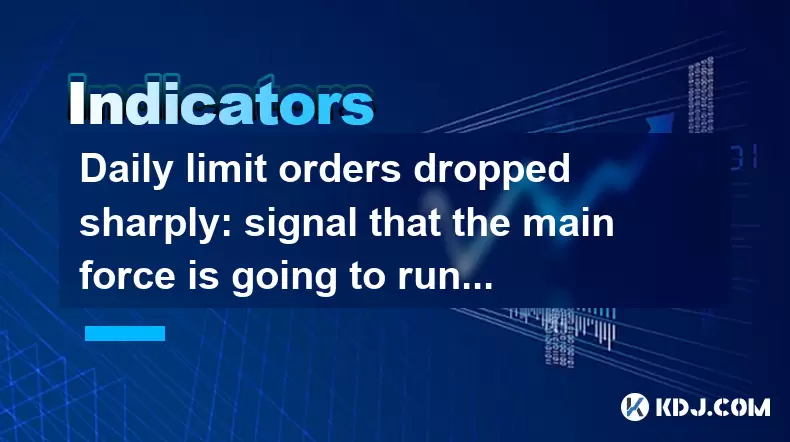
Understanding the Drop in Daily Limit Orders
A sharp decline in daily limit orders on major cryptocurrency exchanges has triggered concern among traders and analysts. This phenomenon refers to a sudden reduction in the number of pending buy or sell orders placed at specific price points, which are crucial for measuring market depth and liquidity. The drop can be observed across multiple trading pairs involving BTC, ETH, and altcoins.
The key question is: does this drop indicate that institutional players or large holders (commonly referred to as "whales") are preparing to exit the market?
Daily limit orders are often used by professional traders to accumulate or distribute assets without causing immediate price slippage.
What Causes a Sudden Decline in Limit Orders?
There are several technical and behavioral reasons behind the rapid disappearance of limit orders:
- Market maker activity adjustments: Automated trading bots may pull out orders during periods of high volatility to avoid being filled at unfavorable prices.
- Exchange-specific events: Technical upgrades, API changes, or maintenance activities can cause temporary order cancellations.
- Manipulation tactics: Large traders sometimes remove significant order volumes to create artificial support or resistance levels, misleading retail investors.
In many cases, a single factor isn't responsible — rather, it's a combination of these elements that leads to a visible decrease in open limit orders.
It’s important not to jump to conclusions based solely on order book data, as it doesn’t always reflect real-time intent.
Analyzing Order Book Depth and Its Implications
Order book depth shows how much buying or selling pressure exists at various price levels. A shallow order book after a drop in daily limit orders could suggest:
- Reduced confidence among market participants
- Potential short-term price instability
- Increased risk of pump-and-dump or wash trading scenarios
Traders often use tools like depth charts and liquidity heatmaps to visualize this data. These tools help identify whether the drop is concentrated in one direction (e.g., only buy orders disappearing) or evenly spread.
A thinning buy wall may precede a downward price movement, especially if sell pressure remains constant or increases.
How to Interpret This Trend from a Trading Perspective
For active traders, understanding the implications of reduced limit order volume involves checking multiple data sources:
- Compare current order book metrics with historical averages
- Monitor on-chain data such as large transfers and exchange inflows/outflows
- Track sentiment indicators like Google Trends, social media buzz, and derivatives funding rates
One approach includes setting up alerts via platforms like Glassnode, CoinGecko Pro, or TradingView to detect abnormal patterns in order flow or liquidity concentration.
Combining order book analytics with broader market signals provides a more accurate picture than relying on a single metric alone.
Steps to Verify Whether Big Players Are Exiting
If you're concerned about the possibility of large entities exiting positions, consider the following steps:
- Check whale transaction logs: Tools like Etherscan or blockchain explorers for specific coins can show unusually large transfers.
- Analyze exchange balances: Use platforms like CryptoQuant to track whether whales are moving funds to exchanges, a sign of potential selling.
- Review perpetual futures funding rates: Sharp drops in funding rates may signal decreased bullish leverage, suggesting profit-taking or bearish positioning.
- Monitor options open interest: A sudden decline in open interest might imply that big players are closing their positions ahead of major events.
Each of these steps helps build a clearer narrative around the behavior of institutional or high-net-worth individuals in the crypto space.
Cross-referencing off-chain and on-chain signals is essential to avoid false positives when interpreting market moves.
Frequently Asked Questions
Q: Can a drop in daily limit orders always be interpreted as negative for the market?
Not necessarily. Sometimes, order books get cleaned due to natural market cycles or algorithmic rebalancing. It depends on the context and other supporting indicators.
Q: How can I distinguish between normal market behavior and manipulation through order removal?
Look for unusual patterns like rapid re-appearance of orders at different price levels, extreme spikes in trade volume without corresponding price movement, or frequent wash trades.
Q: What tools are best suited for tracking real-time changes in limit orders?
Platforms like Bybt, Kaiko, and The Block offer advanced order book analytics. Exchange-native APIs also provide granular data for custom monitoring.
Q: Should retail traders react immediately to drops in limit orders?
Retail traders should avoid knee-jerk reactions. Instead, use such data as part of a broader strategy that includes risk management and multi-indicator analysis.
Disclaimer:info@kdj.com
The information provided is not trading advice. kdj.com does not assume any responsibility for any investments made based on the information provided in this article. Cryptocurrencies are highly volatile and it is highly recommended that you invest with caution after thorough research!
If you believe that the content used on this website infringes your copyright, please contact us immediately (info@kdj.com) and we will delete it promptly.
- PayPal's PYUSD Stablecoin Investigated by the SEC, But No Enforcement Action Is Being Sought
- 2025-06-15 11:25:12
- Turbo (TURBO) Price Prediction 2025-2030: Can Turbo Rocket Upwards Once Again and Deliver a New All-Time High?
- 2025-06-15 11:25:12
- Eric Trump Says Banks Will Need to Utilize Blockchain Technology if They Want to Survive the Next Decade
- 2025-06-15 11:20:12
- Cardano [ADA] Surpasses Ethereum [ETH] in Developer Activity, Signaling a Potential Shift in the Competitive Landscape of Blockchain Platforms.
- 2025-06-15 11:20:12
- The Intersection of Artificial Intelligence and Crypto Is Heating Up, and May 2025 Is Shaping Up to Be a Pivotal Month for Some of the Sector's Most Promising Tokens
- 2025-06-15 11:15:11
- Bybit Launches 1V1 Trading Arena, Gamifying Trading Experience for Crypto Pros and Beginners
- 2025-06-15 11:15:11
Related knowledge
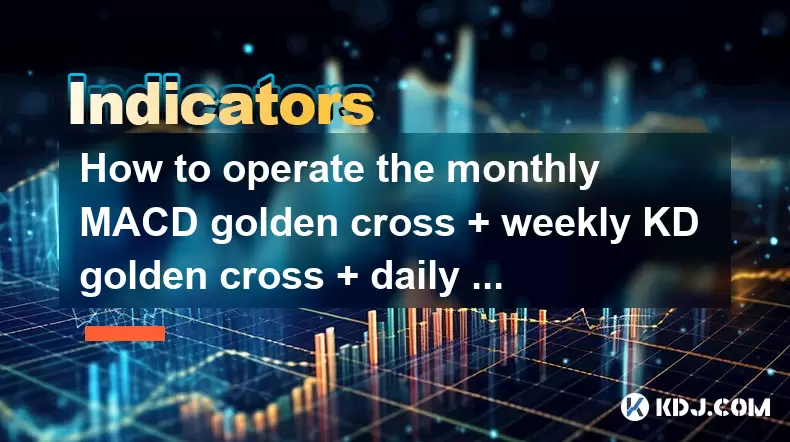
How to operate the monthly MACD golden cross + weekly KD golden cross + daily volume breakthrough?
Jun 15,2025 at 05:36am
Understanding the Strategy: Monthly MACD Golden CrossTo effectively operate the monthly MACD golden cross, traders must first understand what this signal entails. The MACD (Moving Average Convergence Divergence) golden cross occurs when the MACD line crosses above the signal line on a given chart timeframe. When this happens on the monthly chart, it sug...
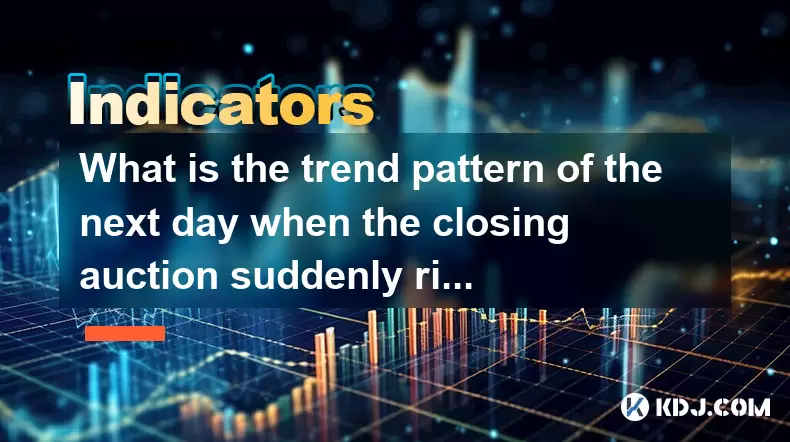
What is the trend pattern of the next day when the closing auction suddenly rises?
Jun 15,2025 at 08:15am
Understanding Closing Auctions in Cryptocurrency MarketsIn the context of cryptocurrency trading, a closing auction refers to a mechanism used by exchanges to determine the closing price of an asset at the end of a trading session. This process typically occurs within a short time window before the market closes for the day and aims to provide a fair an...

What does it mean when the volume fluctuates during the sideways trading at high levels?
Jun 15,2025 at 10:28am
Understanding Volume Fluctuations in Sideways TradingWhen volume fluctuates during sideways trading at high levels, it refers to the changes in the number of assets traded over a given period while the price remains relatively stable, moving within a defined range. This phenomenon typically occurs when the market lacks a clear directional bias—neither b...
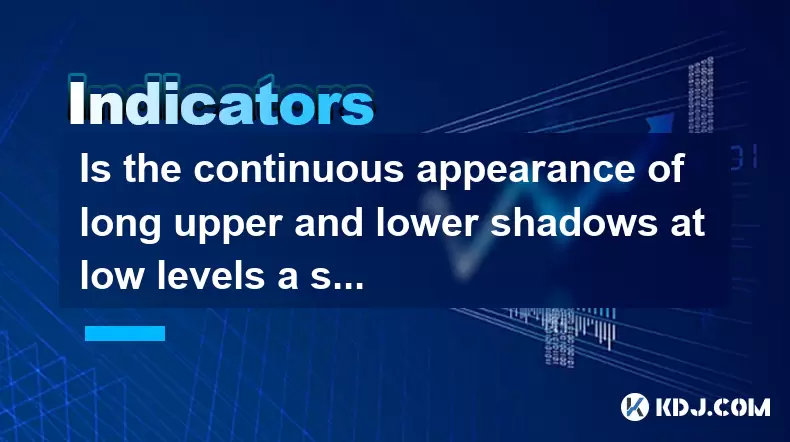
Is the continuous appearance of long upper and lower shadows at low levels a signal of accumulation?
Jun 15,2025 at 01:43am
Understanding Long Upper and Lower Shadows in Candlestick ChartsIn the world of cryptocurrency trading, candlestick patterns are widely used to analyze price movements. A long upper shadow, also known as a wick or tail, indicates that the price rose significantly during the period but was pushed back down by selling pressure. Conversely, a long lower sh...
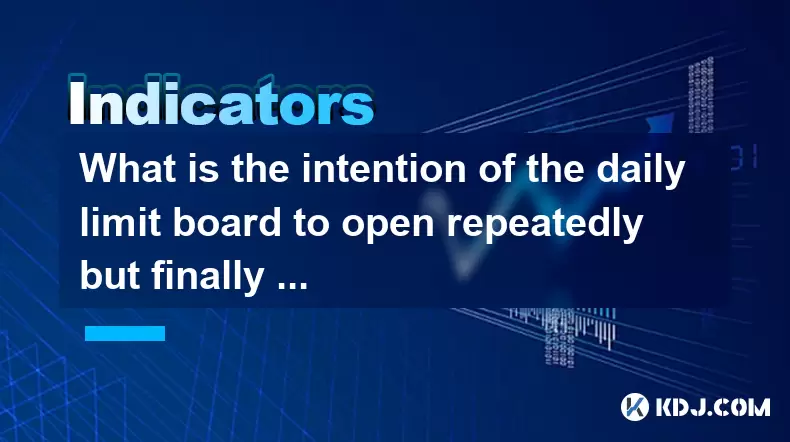
What is the intention of the daily limit board to open repeatedly but finally close?
Jun 15,2025 at 01:08am
Understanding the Daily Limit Board in Cryptocurrency TradingIn cryptocurrency trading, a daily limit board refers to a price movement restriction mechanism applied by certain exchanges or regulatory bodies. This mechanism is primarily used to prevent extreme volatility and panic selling or buying during periods of intense market fluctuation. When an as...

How to calculate the probability of trend continuation after the MACD column divergence?
Jun 14,2025 at 08:01am
Understanding MACD Column DivergenceThe Moving Average Convergence Divergence (MACD) is a widely used technical indicator in cryptocurrency trading. The MACD column, also known as the histogram, represents the difference between the MACD line and the signal line. When price makes a new high or low but the MACD histogram does not confirm this movement, a...

How to operate the monthly MACD golden cross + weekly KD golden cross + daily volume breakthrough?
Jun 15,2025 at 05:36am
Understanding the Strategy: Monthly MACD Golden CrossTo effectively operate the monthly MACD golden cross, traders must first understand what this signal entails. The MACD (Moving Average Convergence Divergence) golden cross occurs when the MACD line crosses above the signal line on a given chart timeframe. When this happens on the monthly chart, it sug...

What is the trend pattern of the next day when the closing auction suddenly rises?
Jun 15,2025 at 08:15am
Understanding Closing Auctions in Cryptocurrency MarketsIn the context of cryptocurrency trading, a closing auction refers to a mechanism used by exchanges to determine the closing price of an asset at the end of a trading session. This process typically occurs within a short time window before the market closes for the day and aims to provide a fair an...

What does it mean when the volume fluctuates during the sideways trading at high levels?
Jun 15,2025 at 10:28am
Understanding Volume Fluctuations in Sideways TradingWhen volume fluctuates during sideways trading at high levels, it refers to the changes in the number of assets traded over a given period while the price remains relatively stable, moving within a defined range. This phenomenon typically occurs when the market lacks a clear directional bias—neither b...

Is the continuous appearance of long upper and lower shadows at low levels a signal of accumulation?
Jun 15,2025 at 01:43am
Understanding Long Upper and Lower Shadows in Candlestick ChartsIn the world of cryptocurrency trading, candlestick patterns are widely used to analyze price movements. A long upper shadow, also known as a wick or tail, indicates that the price rose significantly during the period but was pushed back down by selling pressure. Conversely, a long lower sh...

What is the intention of the daily limit board to open repeatedly but finally close?
Jun 15,2025 at 01:08am
Understanding the Daily Limit Board in Cryptocurrency TradingIn cryptocurrency trading, a daily limit board refers to a price movement restriction mechanism applied by certain exchanges or regulatory bodies. This mechanism is primarily used to prevent extreme volatility and panic selling or buying during periods of intense market fluctuation. When an as...

How to calculate the probability of trend continuation after the MACD column divergence?
Jun 14,2025 at 08:01am
Understanding MACD Column DivergenceThe Moving Average Convergence Divergence (MACD) is a widely used technical indicator in cryptocurrency trading. The MACD column, also known as the histogram, represents the difference between the MACD line and the signal line. When price makes a new high or low but the MACD histogram does not confirm this movement, a...
See all articles

























































































